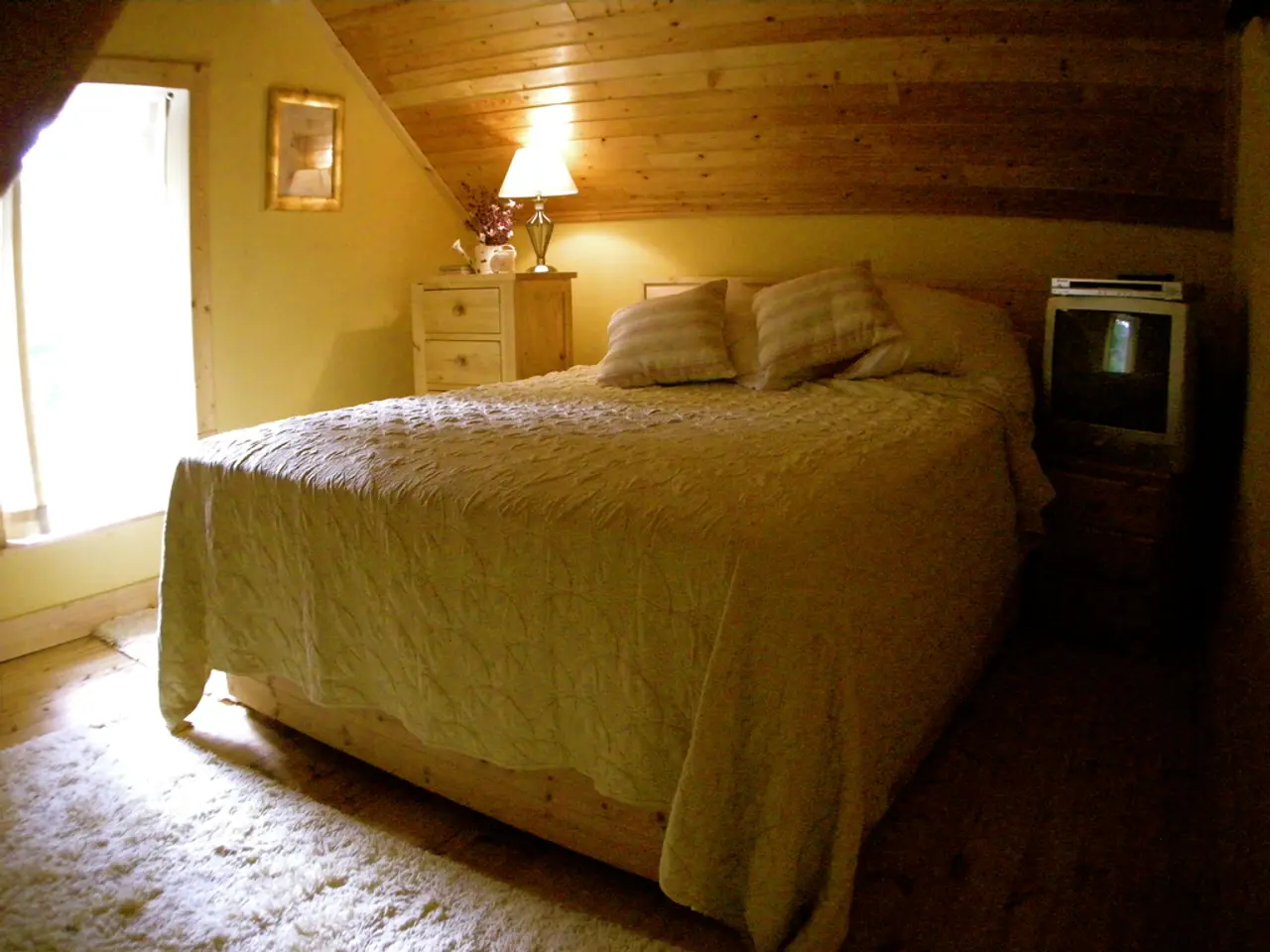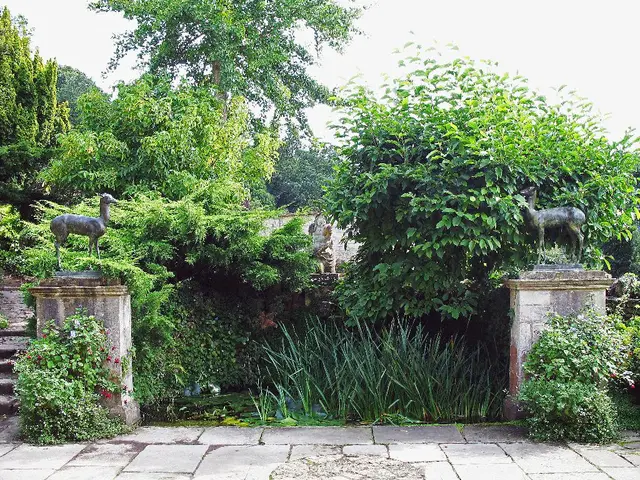"A brief exploration of traditional sleeping arrangements in countryside residences, as one individual labeled the twin bed as a diabolical innovation"
In the realm of British aristocracy and upper classes, a unique tradition has its roots deeply entrenched in history - the practice of sleeping apart. For many centuries, it was common for aristocratic couples, particularly in royal and noble households, to sleep in separate rooms. This custom, which evolved primarily from historical practices emphasizing privacy, status, and social norms, has left an indelible mark on the way we perceive sleeping arrangements even today.
Historically, grand estates and royal residences were large enough to accommodate numerous private chambers, making separate bedrooms a symbol of status and comfort rather than austerity. For instance, Osborne House, Queen Victoria’s family residence, included private bedrooms arranged to balance intimacy and privacy, allowing children to visit parents’ rooms - an element reflecting evolving family dynamics among the aristocracy. Such layouts illustrate how aristocratic domestic life carefully combined formality with private comfort.
The significance of this tradition lay in preserving aristocratic decorum and hierarchy even within intimate domestic spheres. Separate bedrooms maintained a refined distance in marital relations aligned with Victorian and earlier moral codes, while also accommodating sleeping habits shaped by health beliefs and social etiquette. Additionally, large houses enabled specific usages: for instance, bedrooms were parts of suites for individual family members, reflecting rank and propriety.
This tradition has influenced modern sleeping habits to some extent, particularly in notions of personal space within relationships and the continuing awareness of privacy in bedrooms. However, contemporary trends have generally shifted towards shared bedrooms as symbols of emotional intimacy, contrasting with aristocratic practices where separation signified status. Today, separate bedrooms are often more associated with practical needs rather than social ranks, but the aristocratic precedent reveals deep historical roots in how sleeping spaces are culturally constructed.
Mark Girouard, an architectural historian, argued that sleeping arrangements have shaped social dynamics and the very fabric of country-house architecture. Hilary Hinds, a professor at Lancaster University, researched and wrote a book about the cultural history of twin beds, finding that they were considered modern, hygienic, and more comfortable than double beds.
Today, remnants of this tradition can still be found in various British estates. At Burghley House, it was a tradition for couples, even married ones, to sleep apart. This tradition continued until recent times, as shown by a relative recent stay at Chatsworth, Derbyshire, where cases were unpacked in separate dressing rooms. At Eastnor Castle, Herefordshire, dressing rooms en suite with guest bedrooms have been converted to doubles.
In conclusion, the tradition of separate bedrooms among British aristocracy offers a fascinating lens through which to understand the evolution of privacy, intimacy, and social order in British domestic life. From Marie Stopes advocating for separate rooms for romantic appeal to Lady Pamela Hicks stating that it is a mark of elegance, this practice has left a lasting impact on how we view and utilize our sleeping spaces. Despite contemporary trends leaning towards shared bedrooms, the aristocratic precedent serves as a reminder of the deep historical roots that shape our cultural constructs.
Living in harmony with history, the tradition of separate bedrooms in British aristocratic homes continues to influence modern lifestyles. In both fashion-and-beauty and home-and-garden spheres, the concept of personal space and privacy finds its roots in this ancient practice. Relationships, too, have been shaped by this tradition, revealing a delicately balanced blend of intimacy and respect that resonates even today.



